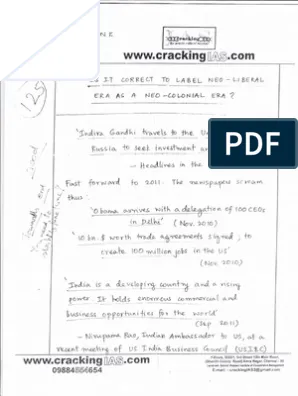|
Context:
- India aims to become a $30 trillion economy by 2047.
- Urban centers must drive innovation, create jobs, and boost economic growth.
- The top 15 cities face systemic challenges: pollution, poor planning, weak governance, and infrastructure gaps.
- Key reforms are needed to unlock their full potential during the “urban decade.”
The Role of India’s Top 15 Cities:
- Cities like Mumbai, Delhi, Bengaluru, Chennai, and Hyderabad contribute about 30% of India’s GDP.
- These cities could add 1.5% more annual GDP growth.
- They face issues such as pollution, traffic jams, slums, water shortages, and poor digital infrastructure.
Environmental and Health Challenges:
- Air Pollution Crisis:
- India has 42 out of the 50 most polluted cities globally.
- Main pollution sources: vehicle emissions, construction dust, biomass burning.
- Solutions: electrify public transport, enforce dust control in construction.
- Union Budget 2025-26 introduced ₹1 lakh crore Urban Challenge Fund to incentivize cities based on performance.
- Solid Waste Management:
- Cities generate 1.5 lakh tonnes of waste daily; only 25% processed.
- Annually, India produces 62 million tonnes of municipal solid waste; 30% processed.
- Reforms: invest in sanitation equipment, train staff, promote performance-based accountability, transition to circular economy.
- Potential to unlock $73.5 trillion by 2030 through waste reforms.
- Indore’s bio-CNG and waste segregation are model examples.
- Urban Water Crisis:
- Nearly half of India’s rivers are polluted; 40% of population predicted to face water scarcity by 2030 (NITI Aayog).
- Cities lose 40-50% of piped water due to leaks.
- Indore’s water-sensitive urban planning includes sealing sewage leaks with GIS tech, rainwater harvesting, and reuse of treated water.
- Housing Deficit and Informal Settlements:
- Affordable housing shortfall: 10 million homes now; 31 million by 2030 (CII).
- Growth of informal settlements lacking sanitation and infrastructure.
- Solutions: increase Floor Space Index (FSI) and Floor Area Ratio (FAR) to promote vertical growth.
- Density incentives recommended by G20 India and OECD report.
- Urban Mobility and Congestion:
- Average commuter loses 1.5–2 hours daily in traffic.
- Causes: overpopulation, poor public transport, weak enforcement.
- Solutions: invest in public transport, use AI and IoT for traffic management, implement congestion pricing, encourage smart driving and citizen discipline.
- Digital Infrastructure Gaps:
- India’s internet speed (~100 Mbps) is far behind Seoul and Singapore (1 Gbps+).
- Upgrading digital infrastructure is key to attracting global companies and innovation centers.
- Needs: expand broadband, 4G/5G coverage, reduce spectrum costs, build fibre-optic networks, deploy 5G nationwide.
- Governance and Financing Reforms:
- Urban planners shortage: 1 per 100,000 people vs. global norm of 1 per 5,000–10,000.
- Most cities lack robust master plans.
- Strengthen decentralized governance through full implementation of 74th Constitutional Amendment.
- Increase property tax collection (currently <0.2% of GDP).
- Use digitized land records, land value capture (LVC), and municipal bonds after governance reforms.
- Reimagining Cities as Cultural-Economic Hubs:
- Promote walkable heritage zones and integrated urban experiences.
- Foster partnerships between government (policy and infrastructure) and private sector (innovation and delivery).
- Aim for cities to become global business and cultural magnets like Dubai and Singapore.
Conclusion:
- India’s top 15 cities must lead economic, cultural, and technological transformation by 2047.
- Focused investments in infrastructure, governance, environment, and digital access are critical.
- These cities can drive India’s emergence as a $30 trillion economy and global powerhouse.
|
 EDITORIALS & ARTICLES
EDITORIALS & ARTICLES









 Latest News
Latest News General Studies
General Studies